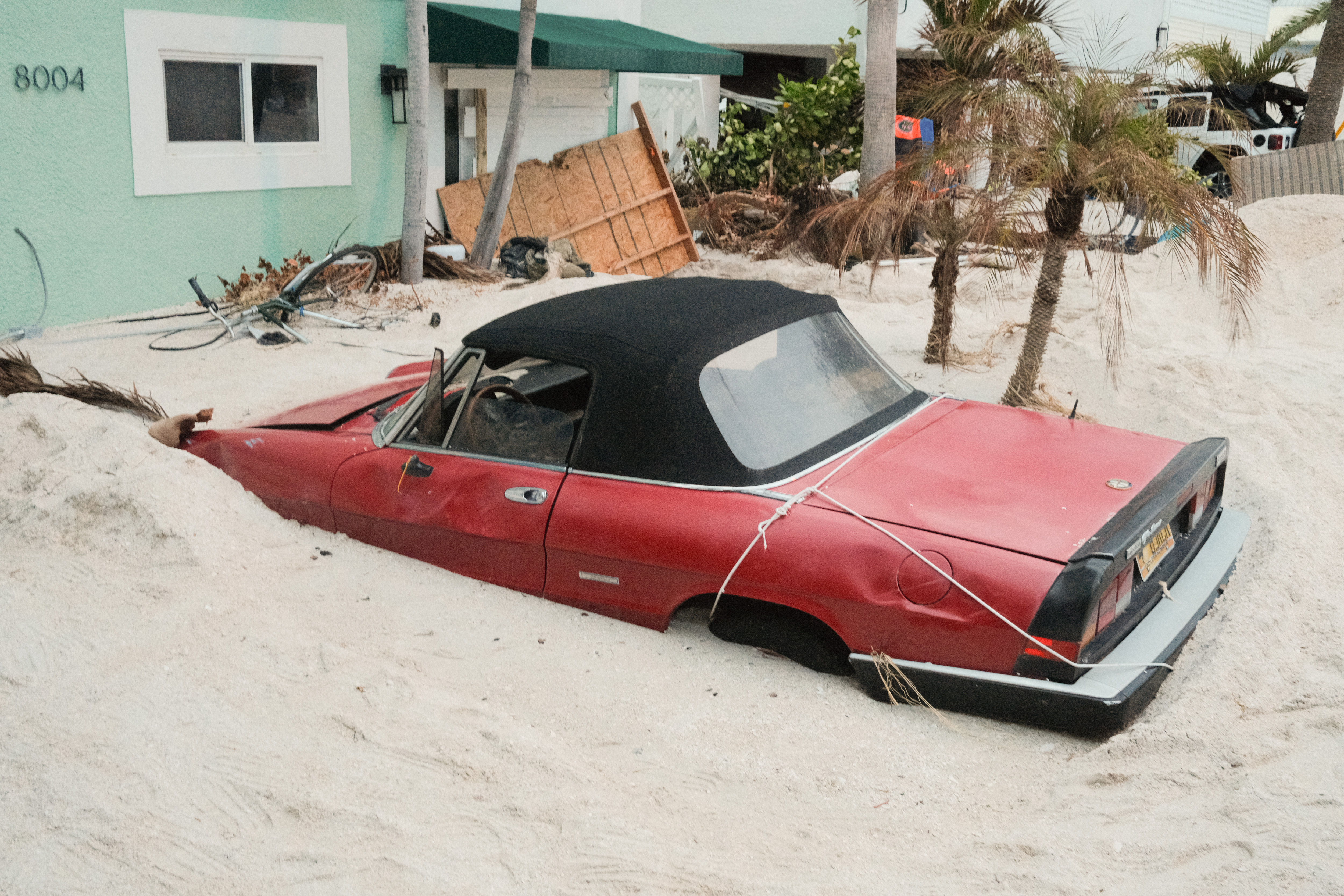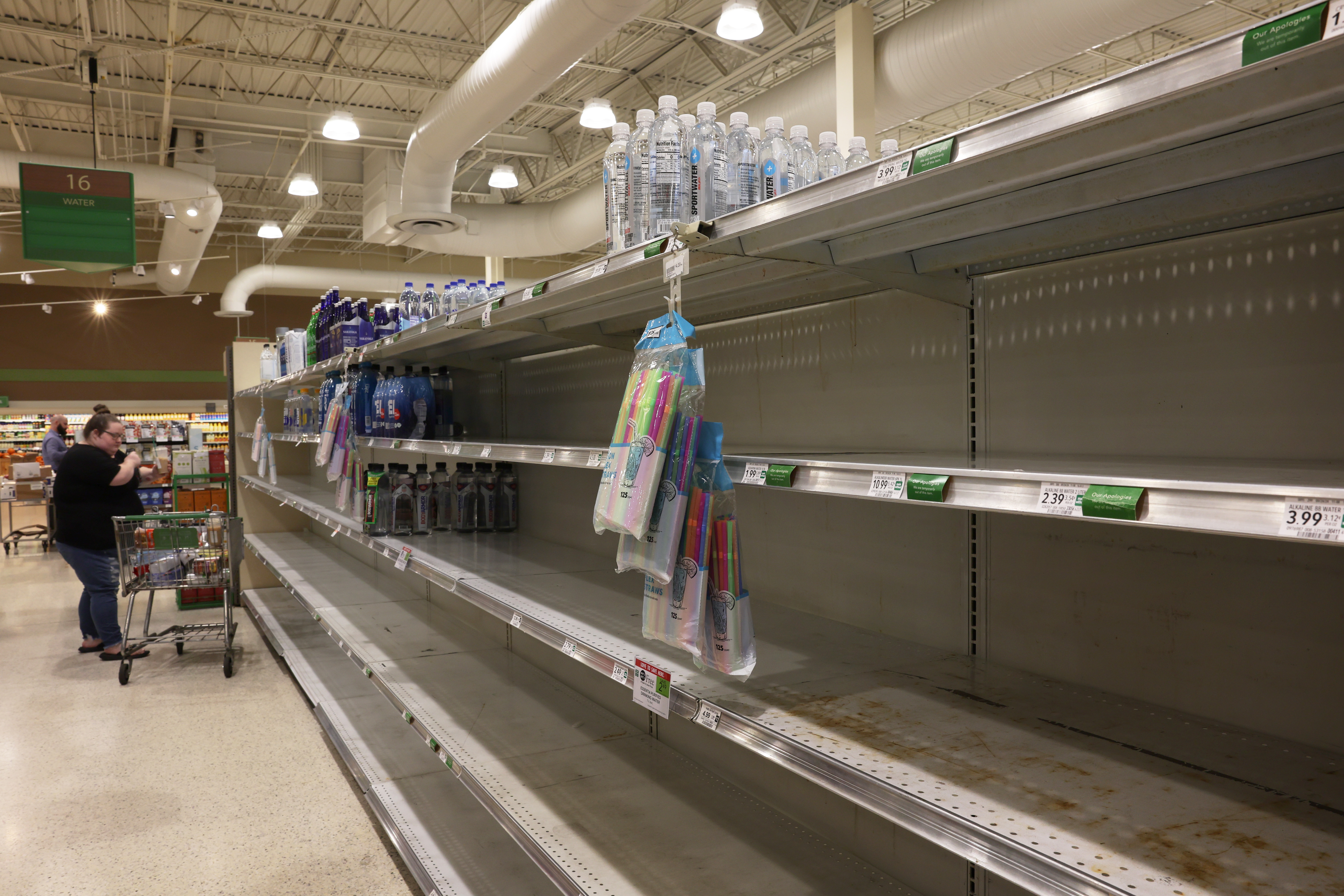As Hurricane Milton gains momentum, its trajectory toward Florida’s Gulf Coast has the region on high alert. With a destructive force that meteorologists warn could make it one of the most catastrophic storms in over a century, officials are urging residents to evacuate. The National Hurricane Center and local authorities have mapped out evacuation zones and continue to stress the need for safety as the storm approaches. Here’s a detailed look at Hurricane Milton, its potential impact, and what residents should do to stay safe.
Hurricane Milton: A Record-Breaking Storm in the Making

Hurricane Milton has quickly escalated to a Category 5 storm, making it one of the most powerful on the Saffir-Simpson scale. With sustained winds over 157 mph, Milton is expected to bring extreme destruction. According to the National Hurricane Center, such storms can result in “total roof failure and wall collapse” for many framed homes, along with widespread power outages that could last for weeks or even months.
- Unprecedented Storm Surge: Projections suggest that storm surges could reach as high as 12 feet in some coastal areas, potentially making this the most devastating surge Tampa Bay has experienced in almost a century. Just a few weeks ago, Hurricane Helene caused a surge of up to 8 feet, but Milton’s surge is anticipated to be far more severe, bringing extensive flooding and property damage.
- Comparisons to Past Hurricanes: Many are comparing Hurricane Milton to other destructive storms, such as Hurricane Irma in 2017 and Hurricane Betsy in 1965. However, what makes Milton uniquely dangerous is the remaining debris from recent storms, like Helene, which could exacerbate the destruction caused by this hurricane.
Evacuation Warnings: “If You Stay, You’re on Your Own”
Local officials have been blunt in their warnings to residents in evacuation zones. Tampa Mayor Jane Castor expressed a dire message: “If you stay in one of those evacuation areas, you’re gonna die.” Sheriff Bob Gualtieri of Pinellas County has urged people to evacuate immediately, calling this the largest evacuation since Hurricane Irma.
- Governor’s Urgent Message: Governor Ron DeSantis emphasized the importance of leaving the evacuation zones, particularly in areas with considerable debris from previous storms. “If hit by a major hurricane, it’s going to dramatically increase damage,” he warned.
- Understanding Evacuation Orders: Evacuation orders have been issued for several coastal communities, and officials continue to stress the urgency of leaving before the storm hits. Those who choose to remain will likely be cut off from emergency services, as it may be too dangerous for first responders to venture out once conditions worsen.
Evacuation Efforts in High Gear Across the Gulf Coast
With Hurricane Milton looming, evacuation orders are in full effect. Thousands of residents are making their way inland, leading to heavy traffic on major highways. Interstate 75, the main route for evacuations, is experiencing significant congestion as people rush to safer ground.
- Popular Evacuation Routes: Many residents are heading north toward the Florida Panhandle, while others are traveling to Fort Lauderdale and Miami, which are expected to be less affected by the storm. Southbound lanes remain relatively empty, underscoring the widespread desire to escape the hurricane’s projected path.
- Communities Take No Chances: Coastal towns like Fort Myers Beach, which suffered extensive flooding during Hurricane Ian, are taking these warnings seriously. The streets are eerily empty as residents evacuate, leaving behind only those making last-minute preparations. Many locals remember the 15-foot storm surge brought by Hurricane Ian and are determined to avoid a repeat of that devastation.
Mapping Out Evacuation Zones: How to Stay Safe
As Hurricane Milton approaches, it’s crucial for residents in high-risk areas to understand their evacuation zones. The Florida Division of Emergency Management has developed a tool called “Know Your Zone,” which helps residents identify their designated evacuation areas by simply entering their address.
- Using the “Know Your Zone” Tool: This online resource allows residents to quickly find the nearest evacuation routes and shelters. It’s especially useful for those in low-lying areas prone to storm surges and for individuals who may be unfamiliar with evacuation procedures.
- Acting Quickly on Evacuation Orders: With mandatory evacuations in place, officials are encouraging residents to leave as soon as possible. Waiting until the last minute can increase the risk of being trapped in dangerous conditions. Those who remain behind may find themselves isolated and unable to receive help once the storm hits.
The Destructive Power of Category 5 Winds
Hurricane Milton’s status as a Category 5 storm brings with it winds exceeding 157 mph. This level of force can cause catastrophic damage, particularly to buildings not designed to withstand such intensity.
- Potential for Severe Structural Damage: Category 5 winds can rip roofs from houses, snap power poles, and completely destroy mobile homes. Even well-built homes may experience extensive damage to roofs and walls, while trees are likely to be uprooted and power lines torn down.
- Prolonged Power Outages: With such force, the storm is expected to result in widespread and long-lasting power outages. Many areas may be without power for weeks, further complicating recovery efforts in the wake of the storm.
Preparing for Storm Surges and Flooding
One of the most dangerous aspects of Hurricane Milton is the expected storm surge, with water levels projected to reach up to 12 feet. This surge can lead to significant flooding, especially in low-lying coastal areas.

- Understanding Storm Surge Threats: Storm surges occur when hurricane winds push seawater onto land, leading to sudden and extreme rises in water levels. These surges can be deadly, as they flood homes, cover roads, and make escape routes impassable.
- Preparation Tips for Residents: Those who are evacuating should turn off utilities at the main switches, secure loose outdoor items, and take essential documents and supplies. For those in non-evacuation areas, it’s advisable to have sandbags on hand, clear gutters and drains, and stay tuned to local weather alerts.
Local Authorities Brace for Impact
With each passing hour, Florida’s Gulf Coast braces for the arrival of Hurricane Milton. Emergency services are coordinating evacuation efforts, shelters are preparing for an influx of evacuees, and hospitals are making contingency plans for a potential surge in patients. However, authorities are keenly aware that resources will be stretched thin, particularly given the destructive potential of a Category 5 storm.

- Shelters and Emergency Plans: Local governments have opened shelters across the region to accommodate those evacuating. Many shelters are offering additional services, such as accommodations for pets and special medical needs. Evacuees are encouraged to bring emergency supplies, including food, water, and medication, as shelter resources may be limited.
- Hospitals on High Alert: Medical facilities in the storm’s projected path are preparing for an influx of patients. Many hospitals are also evacuating patients in non-essential care to other locations as a precaution.
Final Preparations: What Residents Should Do Now
With Hurricane Milton poised to make landfall, residents in the storm’s path need to make final preparations. This includes following local updates, gathering necessary supplies, and finalizing evacuation plans. Time is of the essence, and every moment counts as the storm nears.

- Gather Emergency Supplies: Residents should assemble a hurricane kit that includes food, water, first-aid supplies, flashlights, and batteries. Essential documents, such as identification and insurance papers, should also be packed in waterproof containers.
- Stay Informed: Tune in to local news and weather updates for the latest information on the hurricane’s path and any new evacuation orders. Sign up for emergency alerts from local authorities to receive real-time information on conditions in your area.
Conclusion: Hurricane Milton’s Unprecedented Threat
As Hurricane Milton approaches Florida’s Gulf Coast, it’s clear that this storm could be one of the most destructive the region has seen in a century. The combination of powerful winds, devastating storm surges, and widespread flooding poses a severe threat to life and property. With evacuation orders in place and local authorities working tirelessly to prepare, residents must take immediate action to protect themselves and their families. By following evacuation guidelines, staying informed, and making essential preparations, those in the storm’s path can increase their chances of staying safe as Hurricane Milton bears down.


